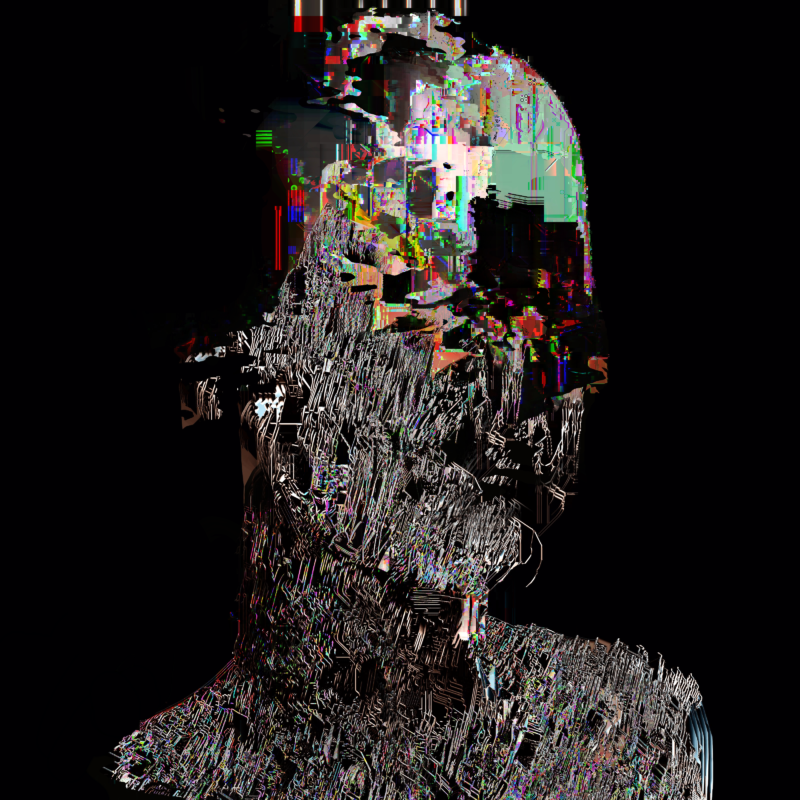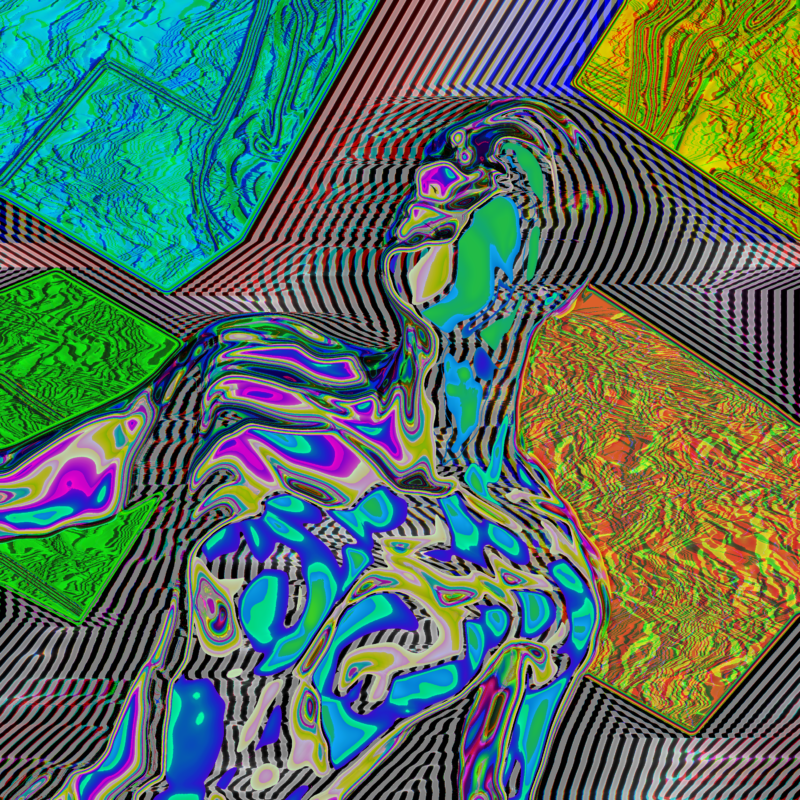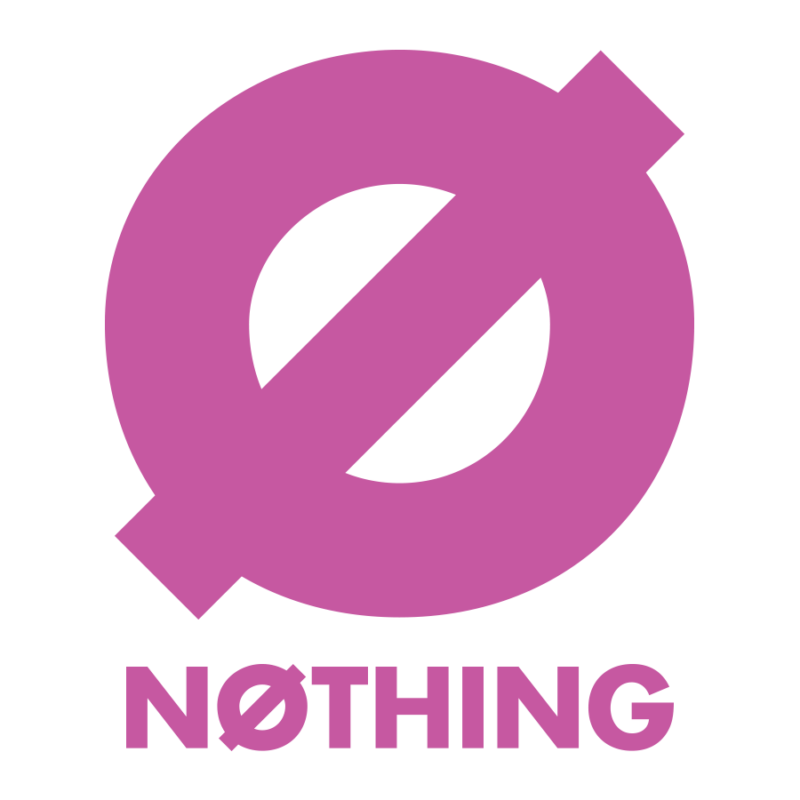Adrian Cain, a glitch artist from Tulsa, Oklahoma. Originally from Pawnee, he describes as a rural town. Adrian didn’t really grow up in the art scene. It wasn’t until after high school, when he moved to Tulsa.
Starting on a Facebook page called Glitch Artists Collective, it was a great resource to learn in 2016, says Adrian. “This was before there were after effect packs of glitch art, y’know all these pre-made filters — which is great, I love to see it that popular.”

Adrian starts with a 3-D rendering software blender. Since he has a basic computer, he starts with a black background and tries to get a human figure, one with an expressive pose, maybe mid-motion.
The glitch will tear apart the image, the original could be a happy expression but it could be “torn up into whole new places.”
The expressive colors come from a sound editing software, Adrian uses Audacity and a process called Sonification. “It could be very painterly sometimes, it could be very granular, sometimes really smooth and glossy.”
Left: dc_12 -Capricious
Before Adrian gets started, he likes to have an end result in mind. Then he’ll sort through the digitals tools; reverb, delay, wah-wah. Adrian uses his emotional inspirations to get started, sometimes beginning with photographs he took from around the country and re-image them.
. . .
Adrian got a degree in Business, working in offices most of his career. “That was the great thing about glitch art, I could practice it at work,” he laughs.
The impact of the NFT market on his work
He began selling online September 2021 as an experiment, in that short amount of time, it changed his perspective on art. Before, he would print his work on canvas prints, even having a booth where he would glitch your image on the spot.
“With NFTs, y’know, my work is digital and now it gets to stay digital. I don’t have to worry about getting the right colors, it can just live in it’s native format. It has really changed the way I create. Instead of posting on my Instagram, which is kind of a stream of images.”
This allows him to make collections, like ones based on photographs, ones based off my renders from Blender, and others that are all Audacity like soni-fication distortion.

dc_37 – a place saved for you
Inspirations
Though he’s art is rigid and digital-based, he takes inspiration from the outdoors and organic material.
“When you really look at organic material, there are some things that look digital. The outdoors is my recharging spot. Clouds really inspire me with all the different textures. Water usually get me going, inspiration wise. I really love architecture, and the contrast between architecture and nature. It’s always been something that I’be been drawn too.
“There’s kind of a cool connection between glitch art and the LGBTQ+ community. Growing up a gay man in Oklahoma has had it’s ups and downs for sure. So I felt a lot of comfort, and friendship with that. There’s just like an inherent — queer people will always find a niche, because we’re not mainstream. It’s kind of a place for us to come together and make our own obscure weird art, which is very colorful.”

Looking at others people’s glitch art, even traditional art will get him into the flow state. In nature, it’s about getting to the small level of things and looking at the pattern of stones and wood. You can get down to a level where things look very chaotic at first, then you start to see an order in those objects. “It’s like, growing up and always finding faces in everything.”
Right: Fluvail Responsiveness
Salvador Dali was a person he always gravitated towards, and others from the surrealist movement. MTV’s “Liquid Television” and Nickelodeon, Aeon Flux — with their elongated body style. “Exaggerated features, I always loved that, and the really nice line work.”
Adrian was able to travel to Paris and take part in a glitch art showing there, called Bleu. It featured glitch artists from all across the world. “The gallery took place next to a river, and we just partied and hosted workshops.” He knew the community from the Facebook page, and with a few submissions he got accepted to take part in the gallery. Adrian didn’t plan on going, since it was only a month away, but quickly decided once accepted. He and 15 other glitch artists, shared a room where they all slept on the floor, he laughs, “it was the most memorable time.”
Adrian will most likely stay in Oklahoma, most of his family is from there, and “it’s a great place to depart from. Tulsa is a city, like I hear cars from my window all night, but it’s really quick to get out of that [into the outdoors].”
Adrian Cain has a show coming up in September, in Granite Falls, Minnesota, which will take part on a farm with a local music festival. It’s open to the public, called Glitch Art is Dead.
Follow Adrian Cain on Instagram:


